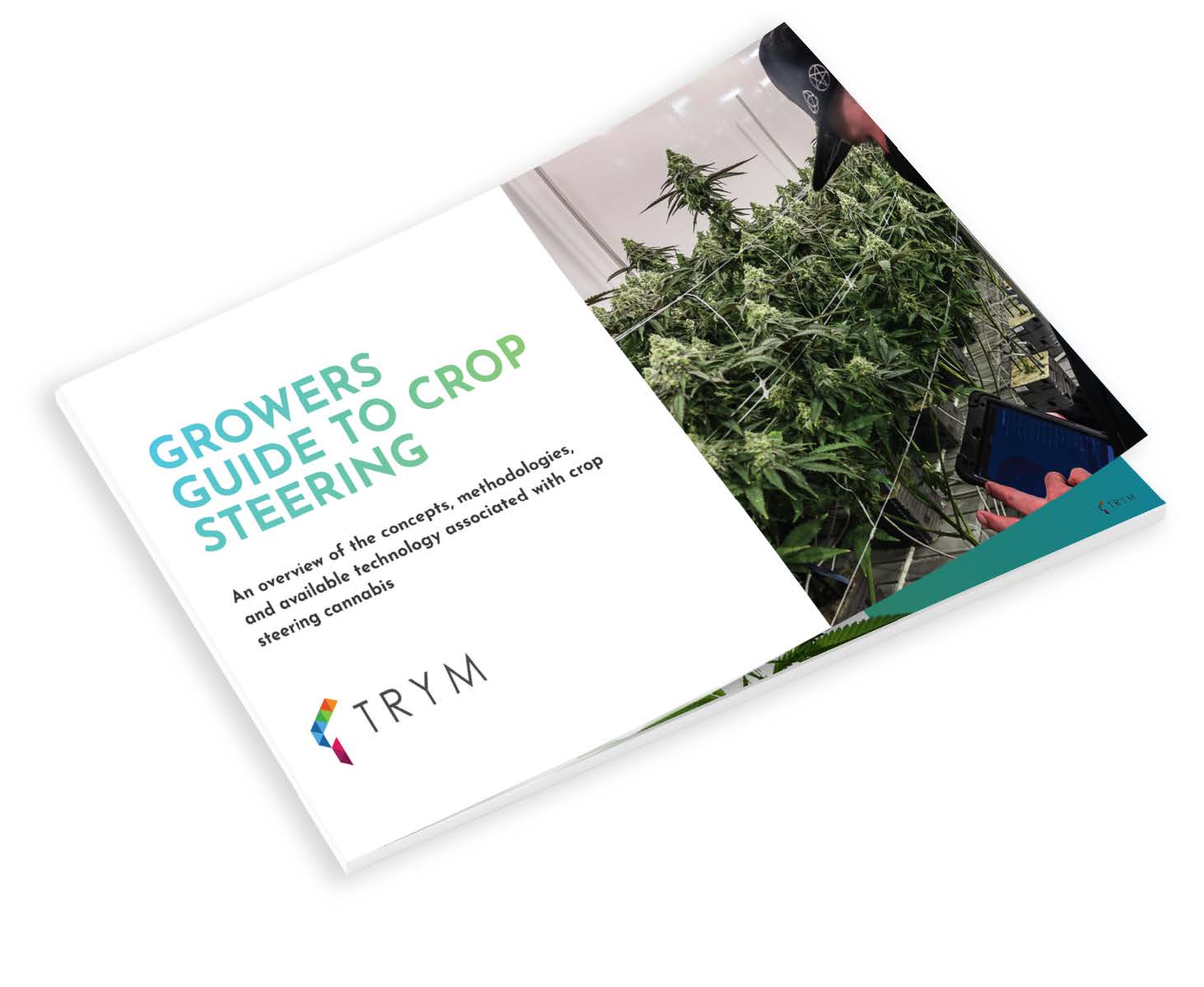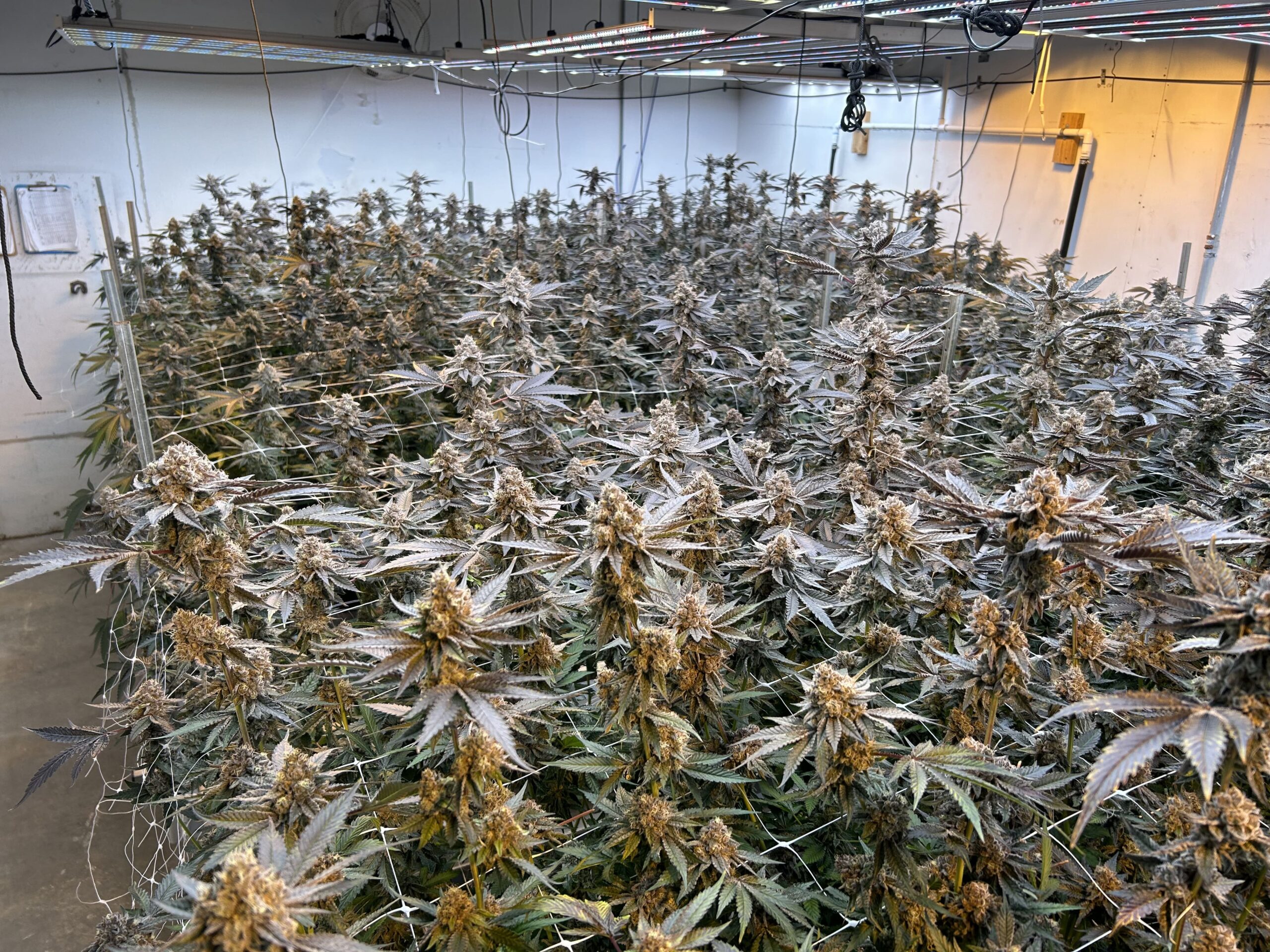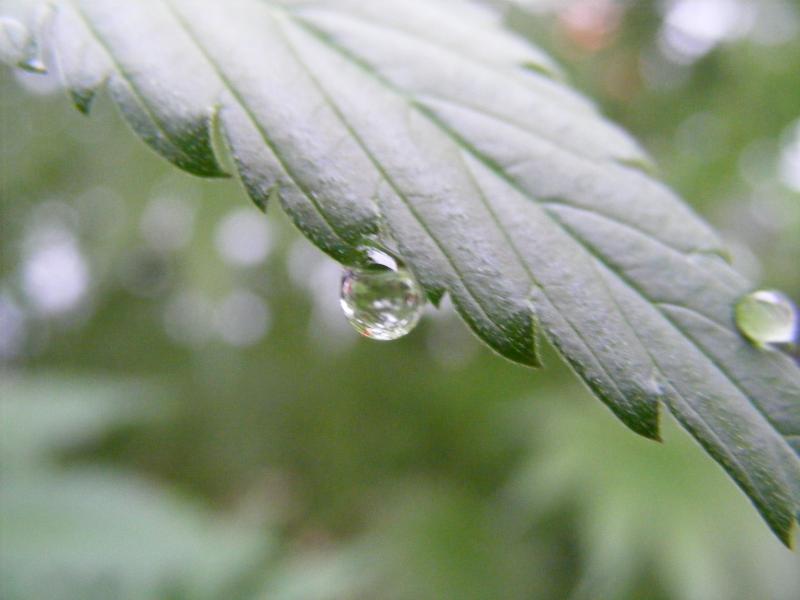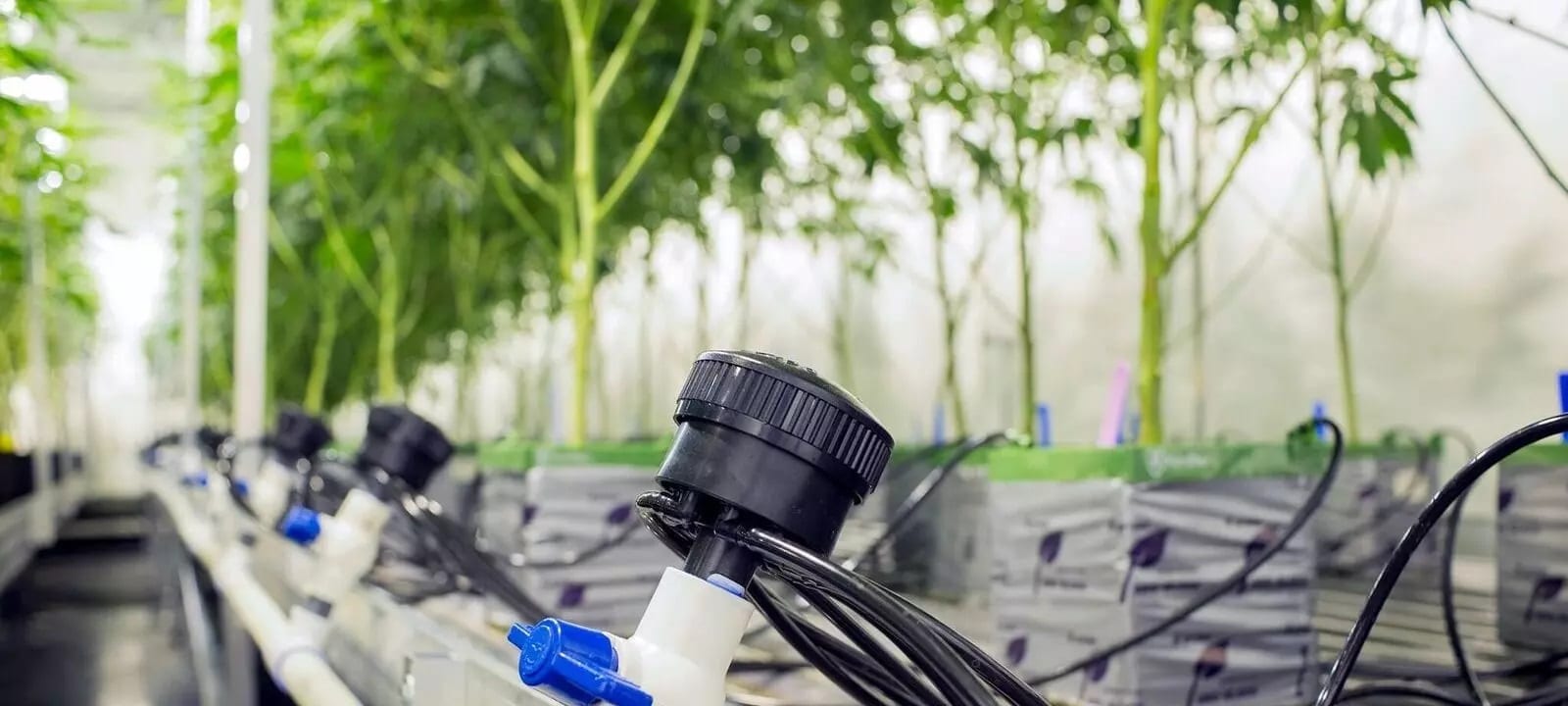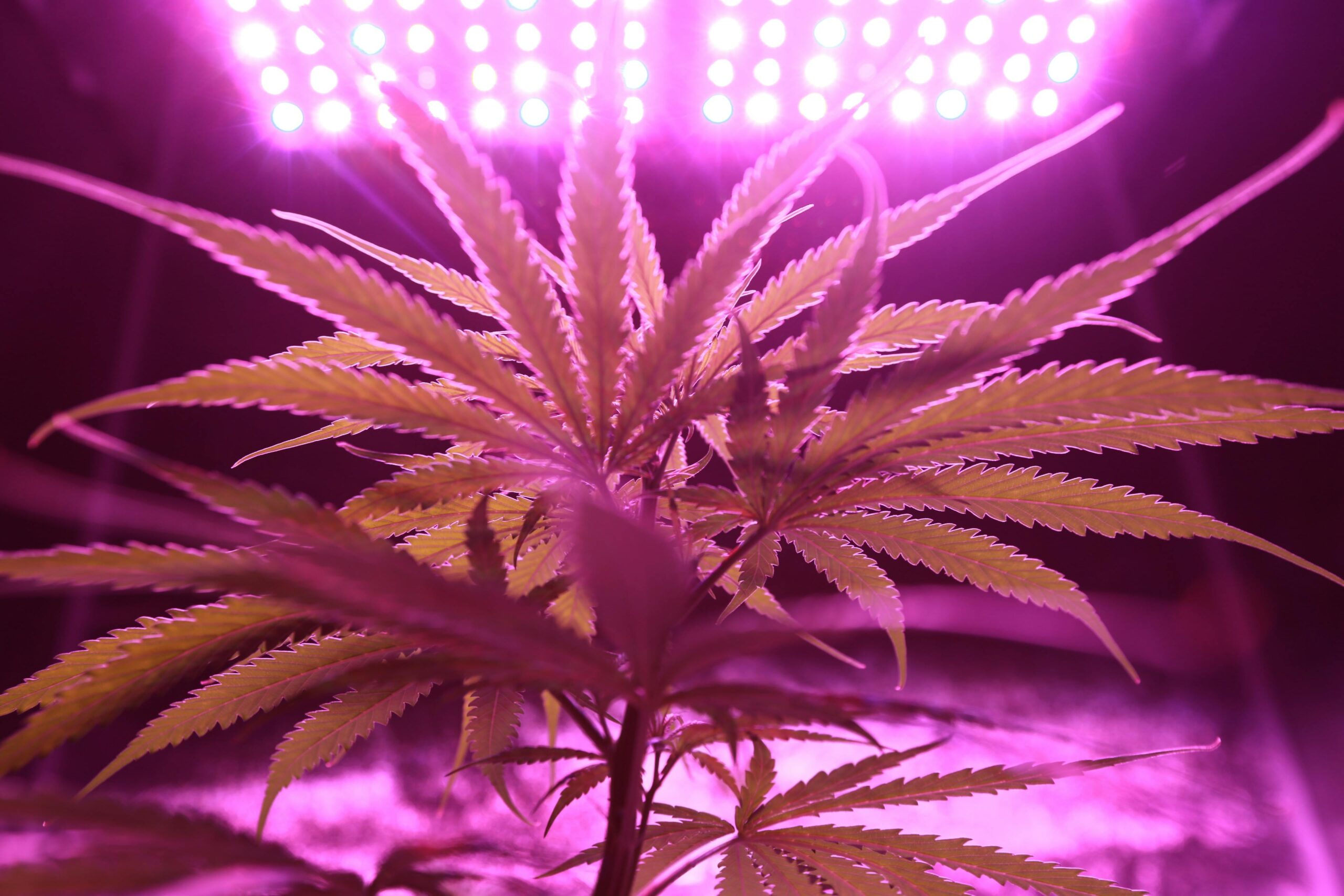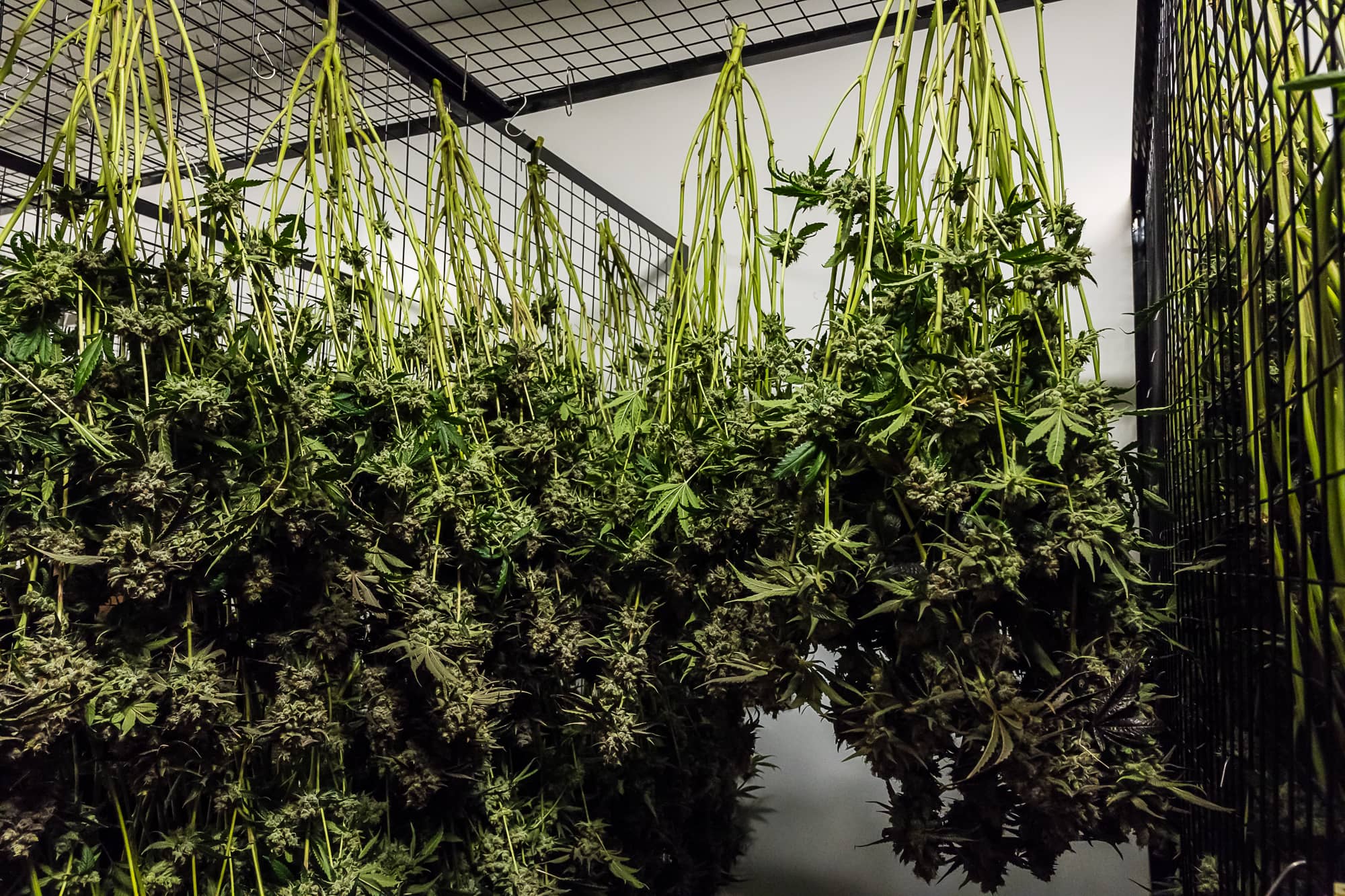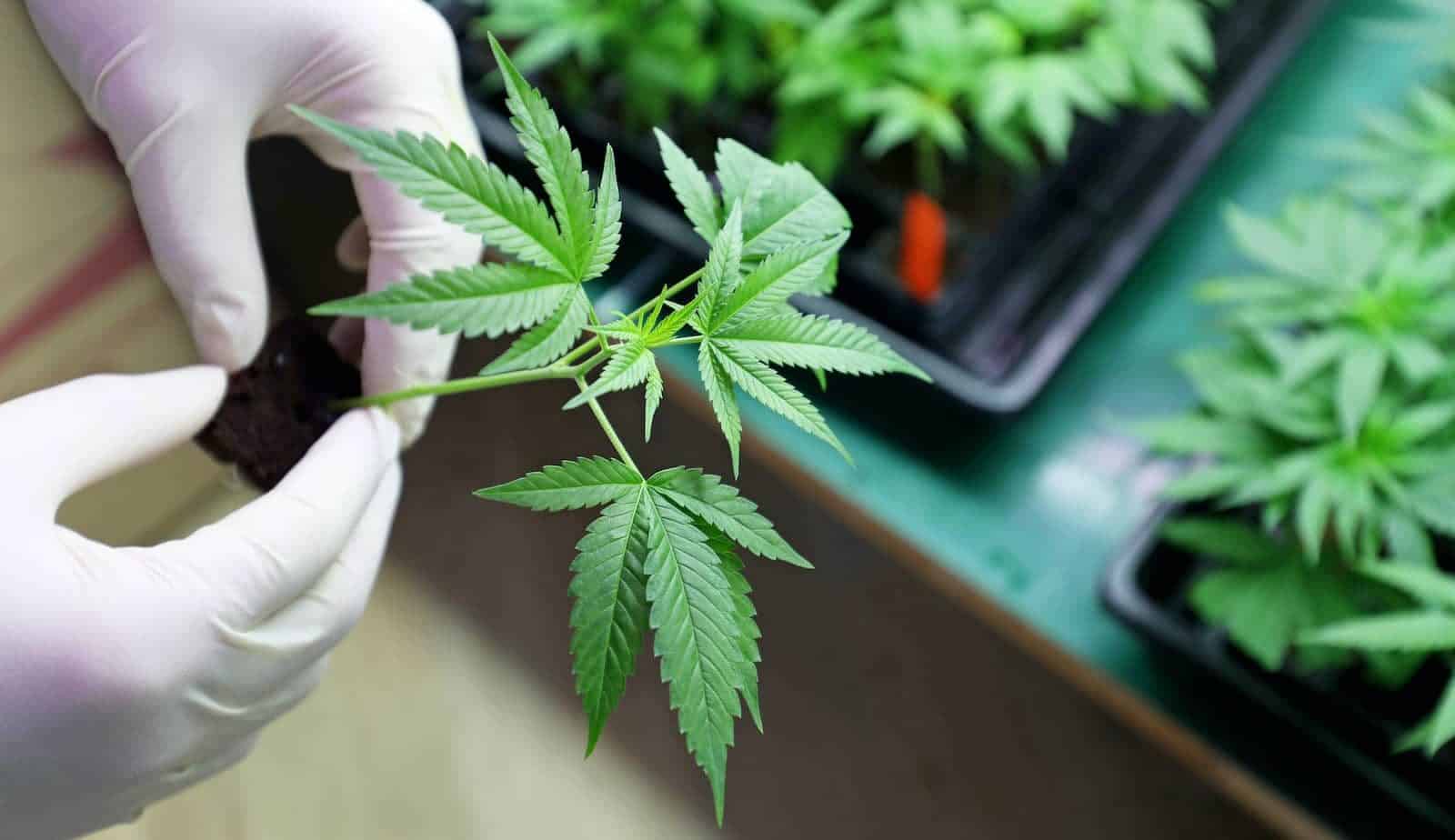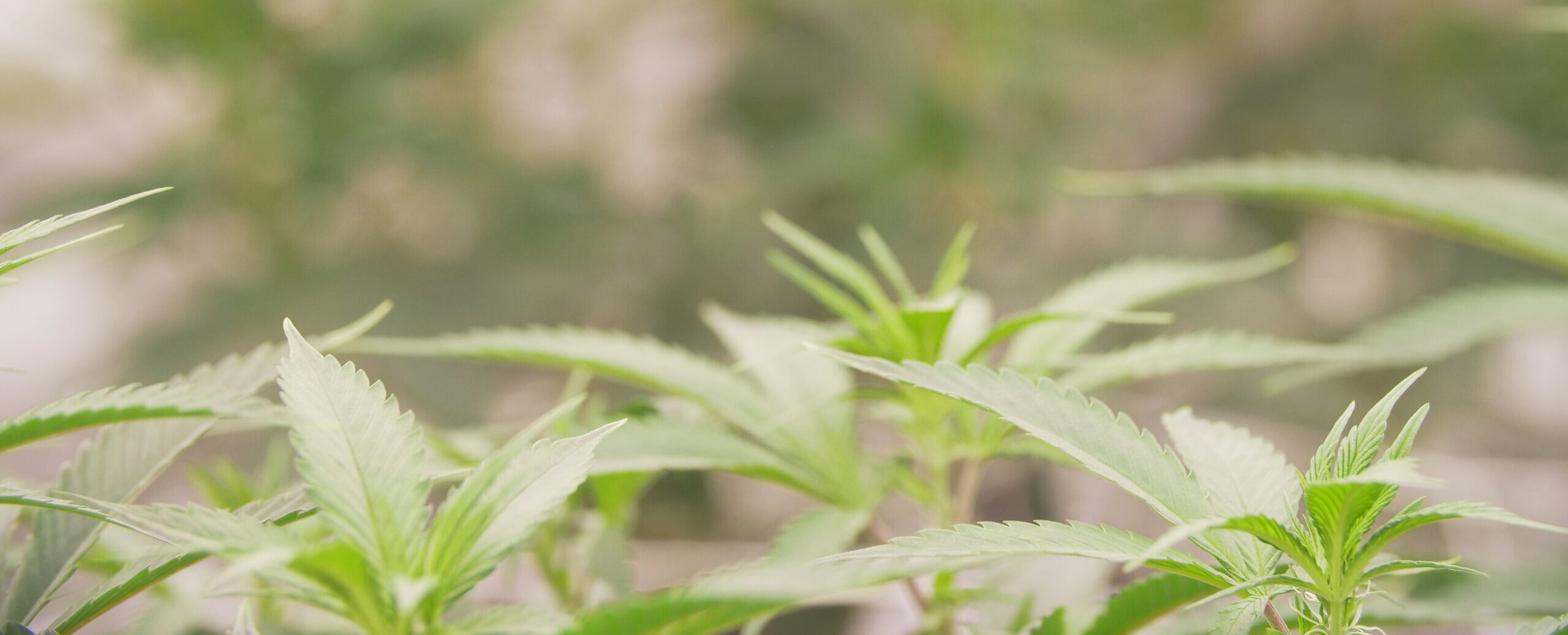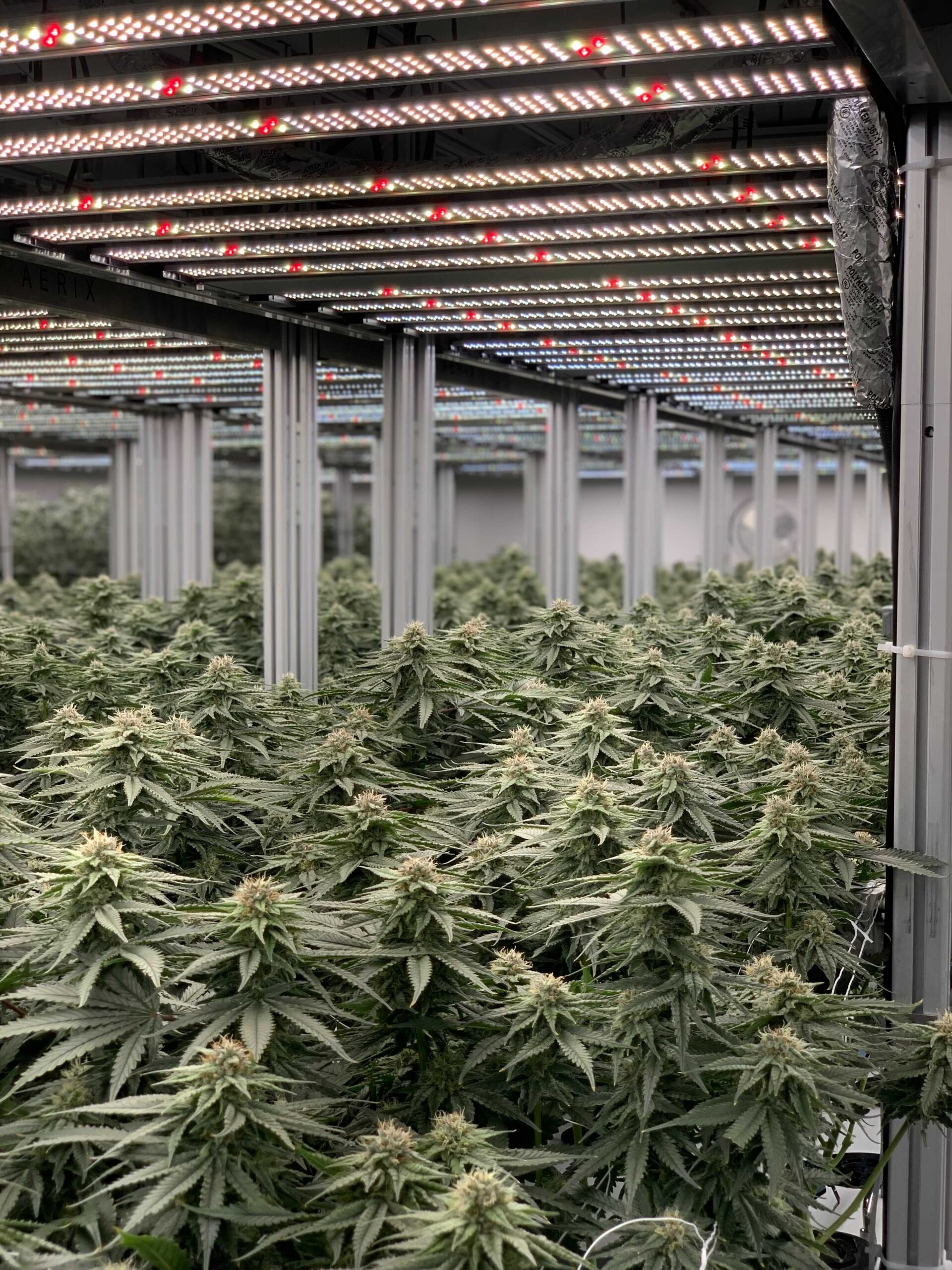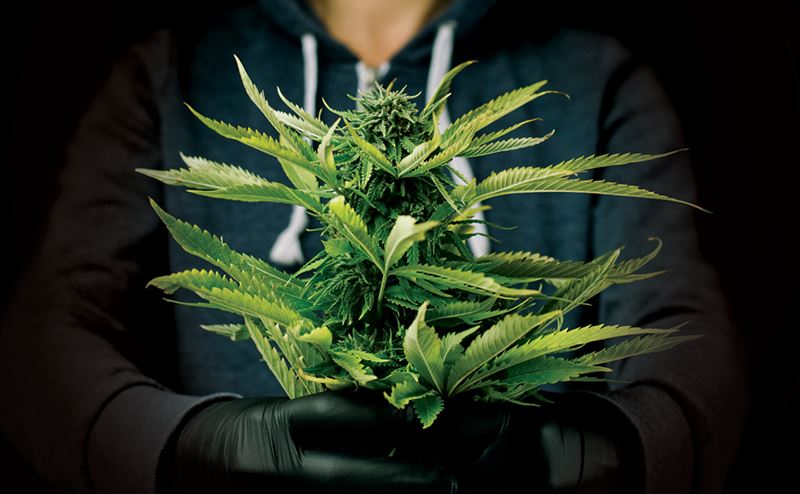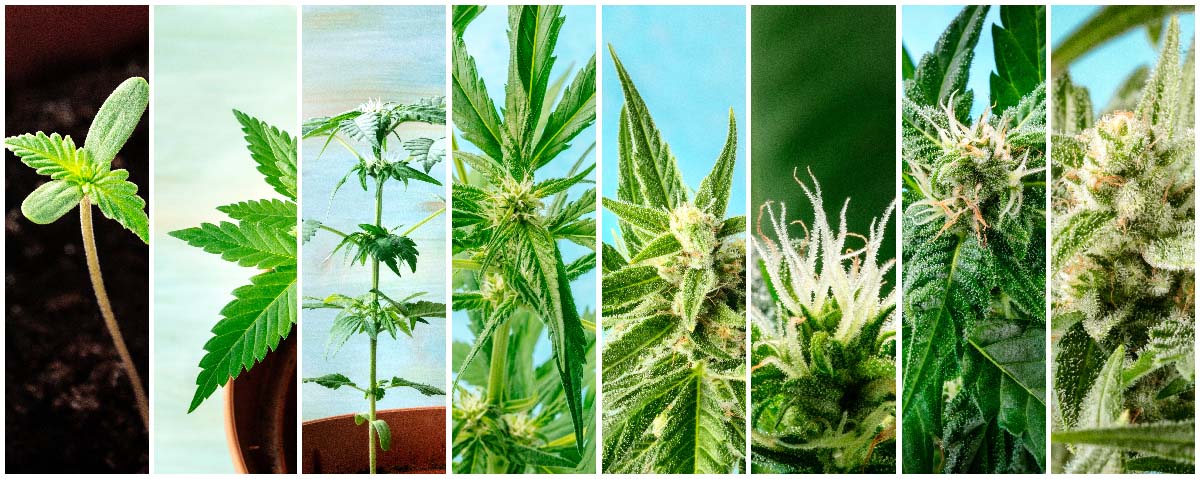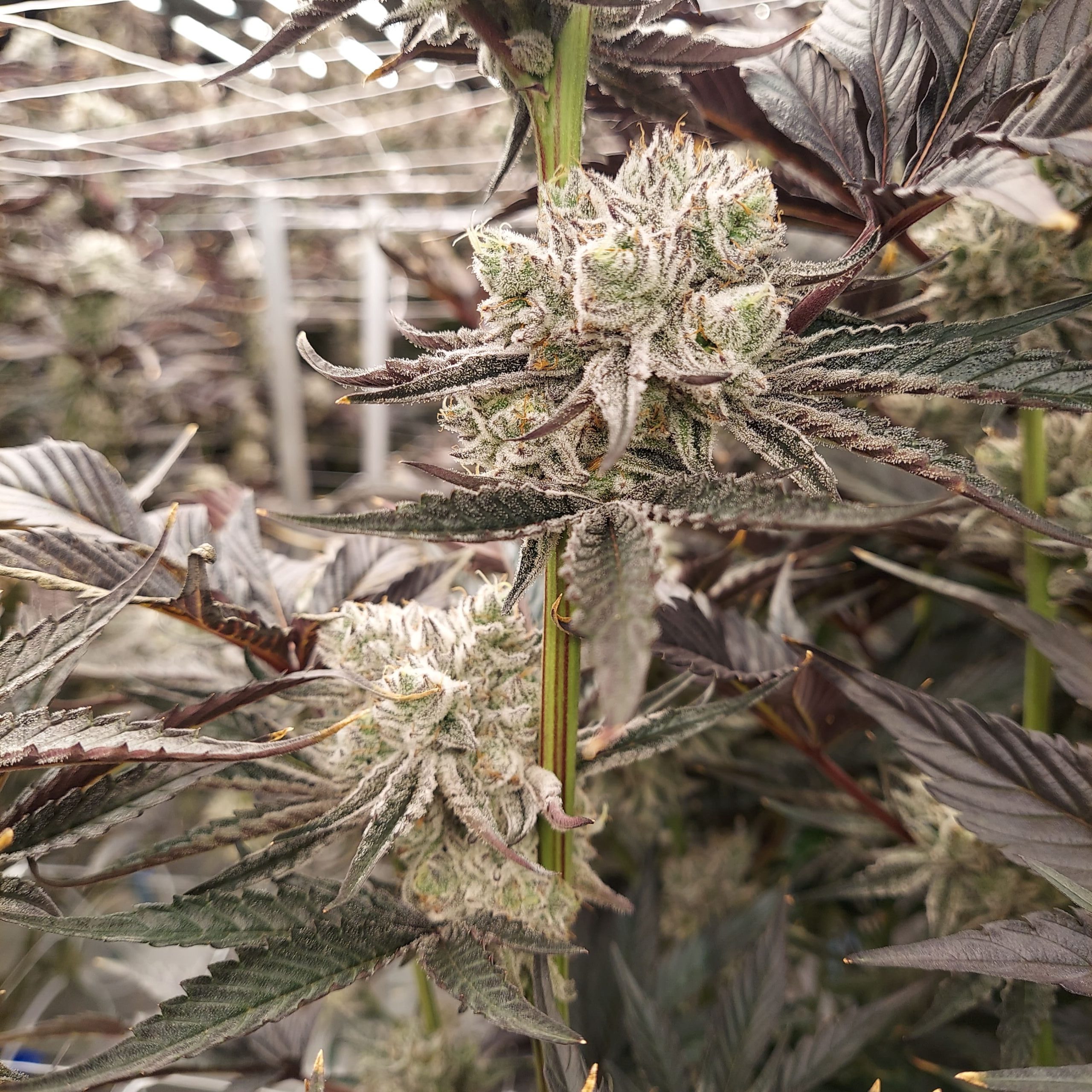Cannabis nutrient lockout is a common problem for cultivators that can cripple the growth and overall yield of their plants. Lockout happens when a plant cannot absorb all the nutrients from the soil medium. The common culprits of nutrient lockout are an imbalance in pH levels, over-fertilization, or the presence of competing nutrients.
Growers are eager to avoid lockout because its effects can harm production and profitability. Plant deficiencies lead to lower flower production and lower-quality cannabis. Recognizing the signs of nutrient lockout and understanding how to prevent and remedy it is a fundamental proficiency for any commercial grower.
Let’s dive into the details of how to identify, resolve, and ultimately prevent it from happening.
Table of Contents
What is Cannabis Nutrient Lockout?
Put simply, nutrient lockout occurs when cannabis plants cannot absorb or utilize the necessary nutrients from their soil medium. This imbalance in nutrient uptake can result in various symptoms detrimental to a plant’s health and productivity.
Even when ample nutrients are introduced, plants suffer due to their inability to process and utilize them, hence the term ‘lockout.’ Imagine a feast before you, but your body cannot digest the food.
The lockout can affect all nutrients, including macro and micro elements, leading to multiple deficiencies detrimental to the plant’s growth and yield.
Download our Crop Steering Guide for Advanced Strategies:
The Science Behind Nutrient Lockout
Lockout often occurs due to an imbalance of pH levels in the soil, water, or nutrient solution. When the pH level is too high or too low, it affects the bioavailability of certain nutrients, rendering them inaccessible to a plant’s roots. A suboptimal pH range can lead to a nutrient deficiency, even if the nutrients are abundant in the growing medium. The lockout can also occur when an excess of one nutrient inhibits the absorption of another, a situation known as antagonistic interaction.
Common Causes of Cannabis Nutrient Lockout
The most common cause of cannabis nutrient lockout is improper pH balance. Cannabis prefers a slightly acidic environment. The ideal pH range in soil is 6.0 to 7.0; in hydroponics, a pH of 5.5 to 6.5 is best. When the pH strays outside these ranges, it can lead to nutrient lockout. Over-fertilization is another common cause. A high concentration of one nutrient can prevent the plant from absorbing other necessary nutrients. In addition, the buildup of salts from chemical nutrients can also cause lockout. Other factors, such as temperature and moisture levels, can also impact nutrient absorption.
Impact of Nutrient Lockout on Cannabis Growth and Yield
Nutrient lockout can have a significant impact on crop growth and yield. When a cannabis plant experiences a nutrient lockout, it cannot get the nutrients it needs to grow correctly. This can result in various symptoms, such as yellowing or browning leaves, slow growth, and reduced yield. In severe cases, nutrient lockout can lead to the death of the cannabis plant. Even if the plant survives, the stress of nutrient lockout can reduce the overall quality of the yield, resulting in lower THC levels and less flavorful buds. Growers must monitor their plants carefully for any signs of nutrient lockout and take swift action to correct the problem.
How to Identify Nutrient Lockout
You need to pay close attention to your cannabis plants to identify nutrient lockout. Ensure your Standard Operating Procedures (SOPs) call for regular visual checks and recording of observations and measurements.
Identifying nutrient lockout in cannabis can be tricky since the symptoms can mimic those of nutrient burn or nutrient deficiency. However, if you suspect a nutrient lockout, there are a few key signs to look for.
The most apparent signs of cannabis nutrient lockout often manifest in the plant’s leaves. They may start to yellow or brown or exhibit spots and streaks. Other symptoms can include slow growth, smaller leaves, wilting, or curling at the edges. It’s also common for the plant to drop its lower leaves.

The tips of the leaves might burn, or the entire plant might take on a strange, dark green color. If these signs are visible, the plant is likely experiencing a nutrient lockout. But don’t be quick to jump to conclusions about what nutrient might be locked out—there are numerous nutrients with unique symptoms that could be culprit. For example, nitrogen lockout often results in yellowing of the lower leaves, while phosphorus lockout can cause purple or blue discoloration.
If these symptoms are present, acting quickly to prevent irreversible damage is essential. Lockout can escalate rapidly. However, remember that these symptoms can also be caused by other issues, such as pests, disease, or environmental stress. It’s important to rule out these possibilities before diagnosing nutrient lockout.
Symptoms and Signs of Nutrient Lockout in Marijuana
The symptoms and signs of nutrient lockout in marijuana plants can vary depending on the specific nutrient being locked out. Awareness of these signs can help growers take immediate action and prevent further damage to the plant. Here are some examples to demonstrate the variety of symptoms.
- Nitrogen lockout often results in yellowing of the lower leaves. Nitrogen is a mobile nutrient, meaning the plant can move it from older leaves to new growth when it is in short supply.
- Phosphorus lockout can darken the leaves, often leading to a purplish or bluish discoloration. Phosphorus plays a central role in energy transfer and storage within the plant. Thus, a deficiency in it disrupts these vital processes.
- Potassium lockout can cause the edges and tips of the leaves to turn yellow or brown and may also cause the leaves to curl. This is due to potassium’s contribution to cell wall strength and disease resistance.
- Calcium lockout can result in distorted new growth and brown or black spots on the leaves. Calcium is vital for cell wall structure and development.
- Magnesium lockout can cause yellowing between the leaf veins, starting from the lower leaves and moving up the plant. Magnesium is a central atom in the chlorophyll molecule, and its deficiency disrupts photosynthesis.
- Sulfur lockout can cause a uniform yellowing of the leaves, as sulfur is essential for producing amino acids and proteins within the plant.
Telling the difference between Nutrient Lockout vs. Nutrient Deficiency
While nutrient lockout and nutrient deficiency may exhibit similar signs, they are different issues and require different solutions.
Nutrient lockout occurs when the soil pH level is too high or too low, preventing the plant from absorbing the nutrients it needs to grow. This could be due to over-fertilization or using a nutrient solution with the incorrect pH level. The plant’s roots can’t absorb nutrients, causing them to “lockout.” Symptoms of nutrient lockout can be similar to those of a deficiency, but it’s crucial to understand that adding more nutrients will not solve the issue and may exacerbate it.
Nutrient deficiency occurs when a plant does not receive enough of a specific nutrient to grow and thrive. This could be due to not providing enough of a particular nutrient or not fertilizing frequently enough. Unlike nutrient lockout, where the nutrients are present but inaccessible, nutrient deficiency means the nutrients are not there. The symptoms of nutrient deficiencies vary based on which nutrient is lacking but often include discolored or distorted leaves.
Misdiagnosing one for the other can lead to further complications. For instance, if the lockout is confused with deficiency, adding more nutrients can exacerbate the problem rather than solve it.
The Role that pH plays in Nutrient Lockout
The pH level of the soil, water, or hydroponic solution in which your cannabis plants grow plays a significant role in nutrient lockout. pH determines the solubility of nutrients, meaning it affects their availability to the plant roots.
Each nutrient has a specific pH range where it is optimally absorbed. When pH deviates from this optimal range, the nutrient becomes less available to the plant, potentially leading to deficiency symptoms.
For example, macronutrients like nitrogen, phosphorus, and potassium are most available in slightly acidic conditions, typically between pH 6 and 7. These nutrients can become locked out if the pH falls too far below or rises above this range. Similarly, micronutrients like iron, manganese, and zinc also have specific pH ranges for optimal absorption. These nutrients can become unavailable at extreme pH levels and reach toxic levels.
Maintaining the correct pH is crucial in preventing nutrient lockout and ensuring plants’ overall health and productivity.
Treating Cannabis Nutrient Lockout
Once you’ve identified a case of nutrient lockout, the quicker you act, the better the chance of recovery and meaningful harvest. This section will provide a comprehensive guide on how to treat nutrient lockout in cannabis, ultimately restoring your plants to their optimal health or, at the minimum, supporting them to continue flower production to whatever potential is left post-lockout. Remember, correcting nutrient lockout is a gradual process.
Steps to Correct Nutrient Lockout in Cannabis
The first step in addressing any problem in life is to identify it. If you’ve confirmed lockout, it’s time to take action. Most likely, there is some pH imbalance somewhere in the line. Identify and remedy that immediately. If you haven’t found it, recalibrate and test your pH meters to ensure it isn’t an equipment issue or human error.
Flushing to Treat Nutrient Lockout
Flushing plays an essential role in treating nutrient lockout in cannabis plants. This process involves washing out excess nutrients and salts from the growth medium, effectively resetting the nutrient profile. Flushing can be done by saturating the growth medium with pH-balanced water, which is then allowed to drain out and carry the build-up of excess nutrients.
Be careful and flush gradually to avoid causing additional stress to the plant. Flushing can initially worsen symptoms as excess nutrients are washed out of the plant’s system. Still, over time, it will enable the plant to start absorbing nutrients properly again.
Reintroducing Nutrients After Lockout
Once you’ve flushed your plants, give them a light feeding with a balanced nutrient solution. It’s important not to overfeed your plants during this time, as it can lead to further lockout issues. Monitor your plants closely during this period and adjust your feeding and pH levels as needed. With patience and careful attention, your plants should recover from the nutrient lockout and return to their optimum health.
A sign of recovery is the new growth of leaves and stems that appear healthier and greener. The overall vitality of the plant should improve. However, depending on the severity of the nutrient lockout, the recovery process can take some time.
Once the plants show signs of recovery, it’s time to reintroduce nutrients slowly. Start with a half-strength nutrient solution to avoid overwhelming the plant, and monitor closely for signs of nutrient burn or other adverse reactions. Gradually increase the nutrient strength over time, always keeping a close eye on the plant’s response. It’s important to remember that different cannabis strains may have different nutrient needs, so keep a detailed log of your strain, the nutrient levels, and its response over time.
Finally, maintain stable environmental conditions, as you are fostering an environment conducive to your plants’ quick recovery from nutrient lockout.
Preventing Cannabis Nutrient Lockout
Cannabis nutrient lockout is a common and top-of-mind issue for many cultivators. By understanding how you can prevent nutrient lockout, you can ensure your plants are healthy and thriving. What are these magic preventative ways? They include maintaining optimal pH levels, proper feeding, and adopting optimal irrigation techniques. Let’s drill into each of these subjects.
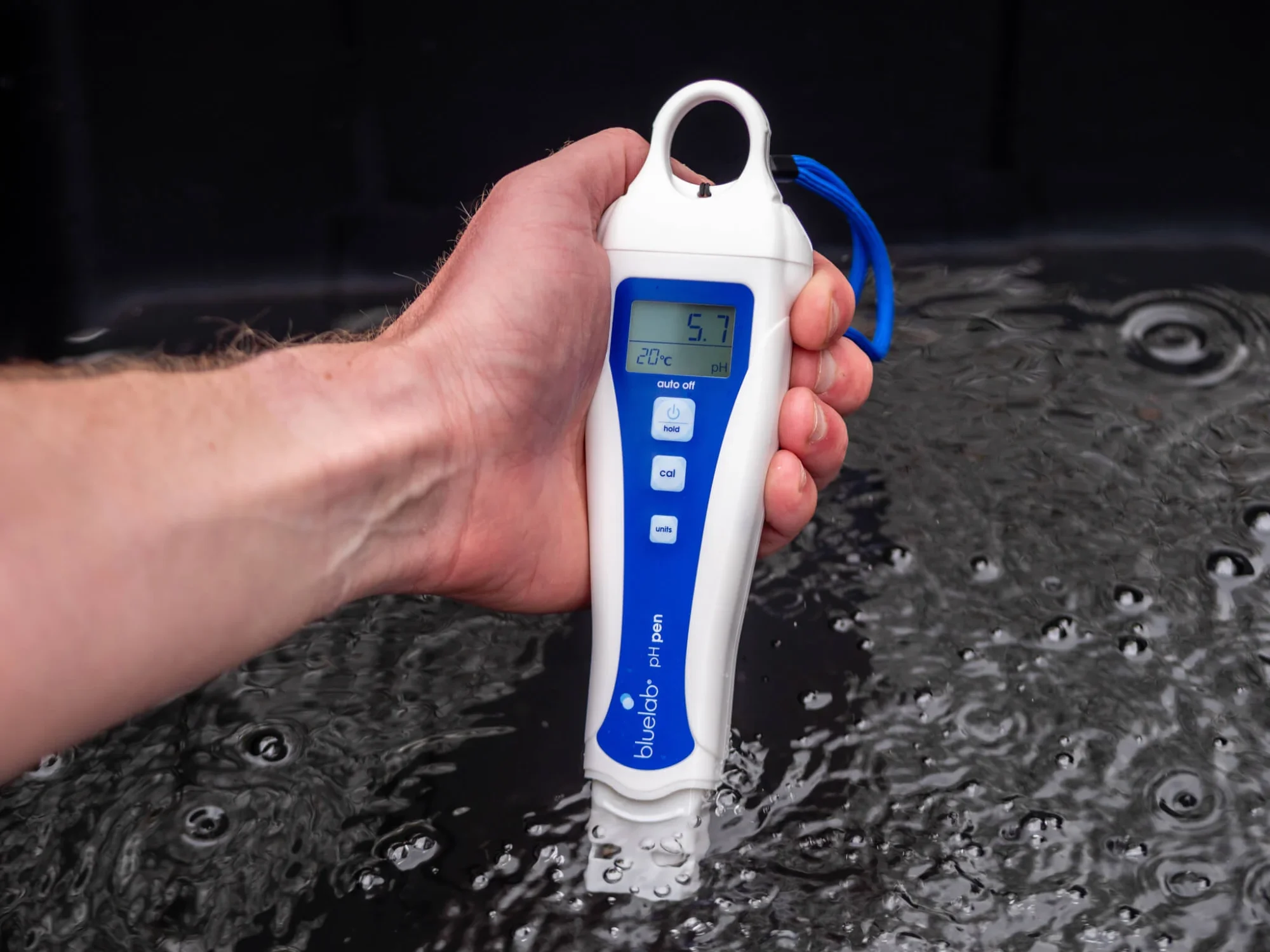
Setting and Keeping Optimal pH Levels
Maintaining optimal pH levels is crucial in preventing lockout. The pH level of your soil or water can significantly affect how well your plants can absorb nutrients. If the pH level is too high or too low, it can cause a lockout, meaning your plants can’t access the necessary nutrients.
Cannabis plants prefer a slightly acidic environment. The optimal pH range for soil growers is typically between 6.0 and 7.0, while hydroponic or soilless growers should aim for a pH between 5.5 and 6.5. Regularly testing and adjusting the pH of your water, nutrient solution, and soil medium before and after feeding can help prevent nutrient lockout.
In addition, use quality pH meters and pH adjusters and recalibrate them frequently, or you’ll have false confidence in your measurements.
Importance of Proper Fertigation
Like humans, cannabis plants require certain essential nutrients to grow and thrive. These include macronutrients like nitrogen, phosphorus, and potassium and micronutrients like calcium, magnesium, and iron. Each plays a different role in plant health, growth, and development. A deficiency or excess of any nutrient can lead to various issues, including nutrient lockout.
Proper fertigation, the process of delivering nutrients to plants through an irrigation system, is critical to ensuring that cannabis plants receive the right balance of nutrients. This method allows precise control over the amount and type of nutrients supplied. With careful monitoring and adjustment of the nutrient solution, growers can prevent problems such as nutrient burn or deficiency. Implementing a well-researched and tested feeding schedule can help ensure optimal plant growth and keep nutrient lockout at bay.
Proper Watering Techniques to Avoid Nutrient Lockout
Watering is more than just pouring water onto your plants. It’s a careful process that requires a good understanding of your plant’s needs. Overwatering or underwatering can both lead to nutrient lockout.
Overwatering can cause oxygen deprivation in the roots, leading to root rot, which prevents nutrient uptake. On the other hand, underwatering can dry out the roots and make it difficult for them to absorb nutrients. It’s essential to strike the right balance by understanding your plant’s water requirements, the type of growing medium you’re using, and the environmental conditions.
With the advancement of cannabis technology, growers can become extremely precise in their watering process. Introducing EC and WC root zone sensors can help you determine precisely when and how much your plants need watering.
Advanced Tips for Managing Cannabis Nutrient Lockout
Growing cannabis is an art that requires both skill and knowledge. Unfortunately, if feeding schedules or cultivation techniques aren’t tried and true, nutrient lockout can be one of the biggest challenges to a cannabis cultivator.
To ensure your cultivation facility is thriving, it’s a good idea to study advanced strategies to manage nutrient lockout. This section provides in-depth insights into the role of soil type, the use of nutrient chelates, and the impact of organic versus synthetic nutrients in managing cannabis nutrient lockout.
The Role of Soil Type in Nutrient Lockout
Soil type plays a vital role in cannabis cultivation and can contribute to nutrient lockout. Different soil types have varying capacities for holding and releasing nutrients.
Traditional living soil is a popular choice for cultivating cannabis because of its rich nutrient content and natural microbial activity. This type of soil imitates the natural environment of cannabis, providing it with a rich supply of nutrients, beneficial bacteria, and fungi. However, using living soil requires careful monitoring of watering and fertilization practices to prevent nutrient lockout.
In contrast, soilless mediums like rockwool and coco coir are often used in hydroponic systems. These mediums do not contain any natural nutrients, so all essential nutrients must be provided through a carefully controlled feeding schedule. Rockwool has excellent water retention and buffering capacity, making it less likely to cause nutrient lockout due to oversaturation. However, due to its lack of nutrients, it may require more frequent feeding.
Coco coir, on the other hand, can hold a lot of water while still providing good aeration. It also has a natural pH close to ideal levels for cannabis growth, reducing the risk of nutrient lockout due to pH imbalance. But like rockwool, it lacks natural nutrients, requiring precise nutrient management.
To prevent nutrient lockout in traditional living soil and soilless mediums, growers should regularly monitor soil or medium moisture levels, pH levels, and nutrient concentrations. Adjusting feeding schedules based on these factors can help ensure that plants receive the right amount of nutrients without the risk of lockout.
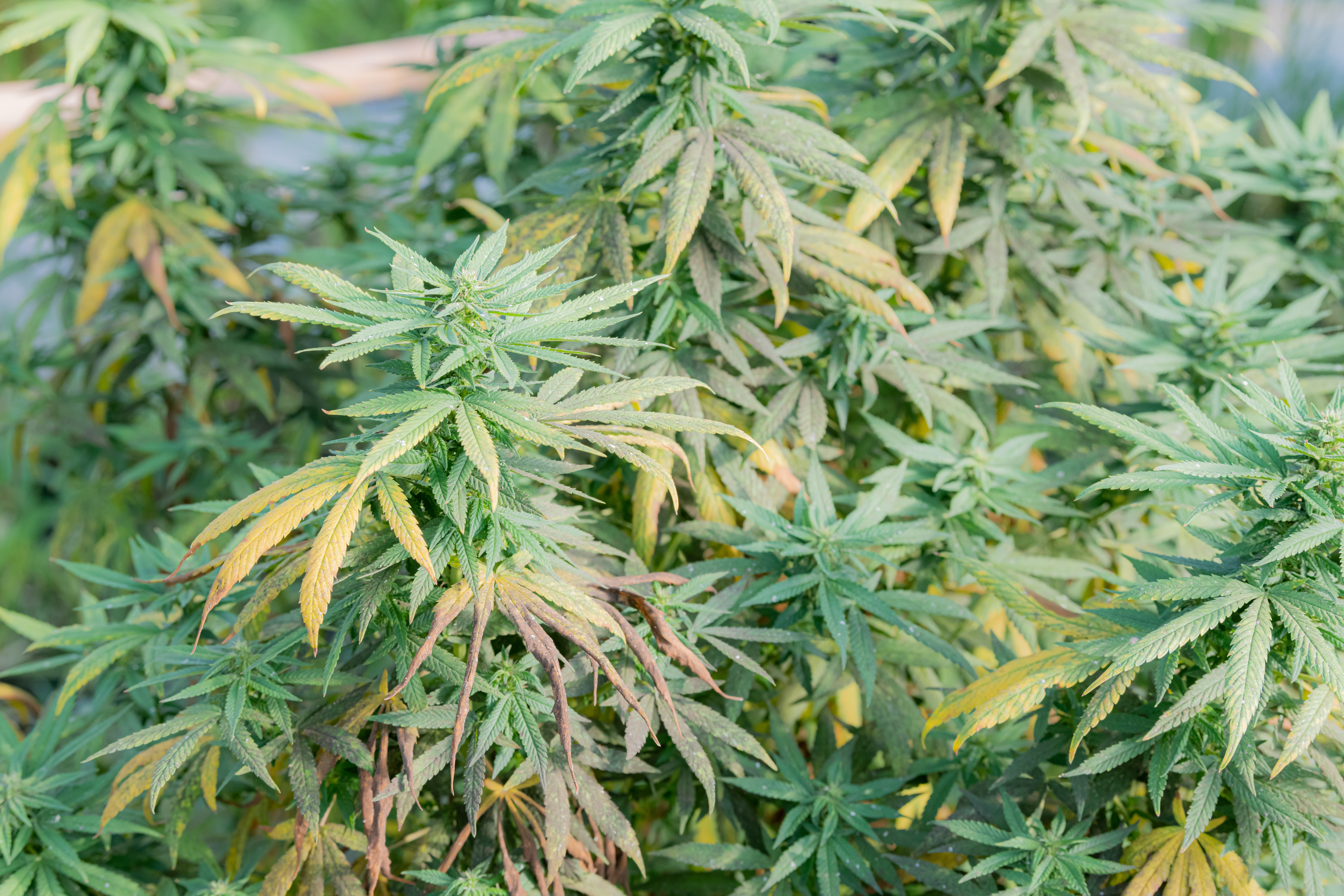
Understanding and Using Nutrient Chelates
Nutrient chelates can be a game-changer in preventing nutrient lockout in cannabis cultivation. Chelation is a process that makes nutrients more accessible to plants, enhancing their absorption and preventing lockout. Nutrient chelates are compounds where a central metal ion is bonded to a large organic molecule, a chelate, which helps the plant absorb the nutrient more efficiently. Using nutrient chelates can improve availability, especially in pH-imbalanced soils that can cause a nutrient lockout. However, using them correctly is important, as overuse can lead to toxicity.
Role of Organic vs. Synthetic Nutrients
The type of nutrients you use in your cannabis cultivation can also contribute to nutrient lockout. Organic nutrients, derived from natural sources like compost and worm castings, are typically gentler and less likely to cause a nutrient lockout. They improve soil structure and increase its nutrient-holding capacity, reducing lockout risk. On the flip side, synthetic nutrients, although fast-acting, can accumulate in the soil, leading to an imbalance and potential lockout. Hence, it’s important to use them judiciously and regularly monitor the soil pH and nutrient levels.
Below are the pros and cons of the nutrient types and how they relate to nutrient lockout.
Pros of Organic Nutrients:
1. Gentle on plants: Organic nutrients are generally milder and less likely to cause a nutrient lockout, making them safer for novice cultivators.
2. Improves soil structure: Organic matter enhances the soil’s structure and water-holding capacity, reducing the risk of nutrient leaching and lockout.
3. Sustainable: Organic nutrients are sustainable and environmentally friendly as they are derived from natural sources like compost and worm castings.
4. Self-regulating: Organic nutrients are typically slow-releasing, providing a constant supply of nutrients to plants over a long period without the risk of overfeeding.
Cons of Organic Nutrients
1. Slow-acting: Organic nutrients take longer to break down and provide nutrients to the plants, making them less ideal for quick growth.
2. Expensive: High-quality organic nutrients can be more expensive than synthetic alternatives.
3. Requires knowledge: Successful use of organic nutrients requires a good understanding of soil biology and nutrient cycling.
Pros of Synthetic Nutrients
1. Fast-acting: Synthetic nutrients are quickly available to the plants, promoting rapid growth and development.
2. Easy to use: They are straightforward and require less understanding of soil biology than organic nutrients.
3. Cheaper: Synthetic nutrients are often cheaper than organic alternatives.
Cons of Synthetic Nutrients:
1. Risk of nutrient lockout: Synthetic nutrients can accumulate in the soil, leading to an imbalance of nutrients and causing nutrient lockout.
2. Environmental impact: Synthetic fertilizers can contaminate water sources due to nutrient runoff, causing environmental problems.
3. Limited soil improvement: Unlike organic nutrients, synthetic ones do not improve soil structure or increase nutrient-holding capacity.
To prevent nutrient lockout, whether using organic or synthetic nutrients, meticulous processes should be established to monitor the soil pH and nutrient levels regularly. Avoid overfeeding and ensure the plants can access a balanced range of nutrients. In the case of a nutrient lockout, flushing the medium with pH-balanced water can help rectify the problem.
Conclusion
Nutrient lockout occurs when a cannabis plant’s root system is unable to absorb essential nutrients. Common causes are an imbalance of pH levels, over-fertilization, or the build-up of salts in the soil. The symptoms often manifest as discoloration, slow growth, and plant wilting. As a grower, understanding these signs and causes can greatly help prevent or address nutrient lockout.
We hope our article was enlightening and that you walk away with a sense of empowered knowledge. Now you know how to identify, treat, and most of all, prevent nutrient lockout.
The cultivation of cannabis is an intricate process and one that requires continuous learning and adaptation. Each cannabis plant is unique and may require different care and nutrients. As such, growers must stay updated with the latest cultivation techniques, research, and solutions to problems like nutrient lockout. This is an ongoing commitment to learning and adapting, but it’s also what makes cannabis cultivation both a science and an art.

